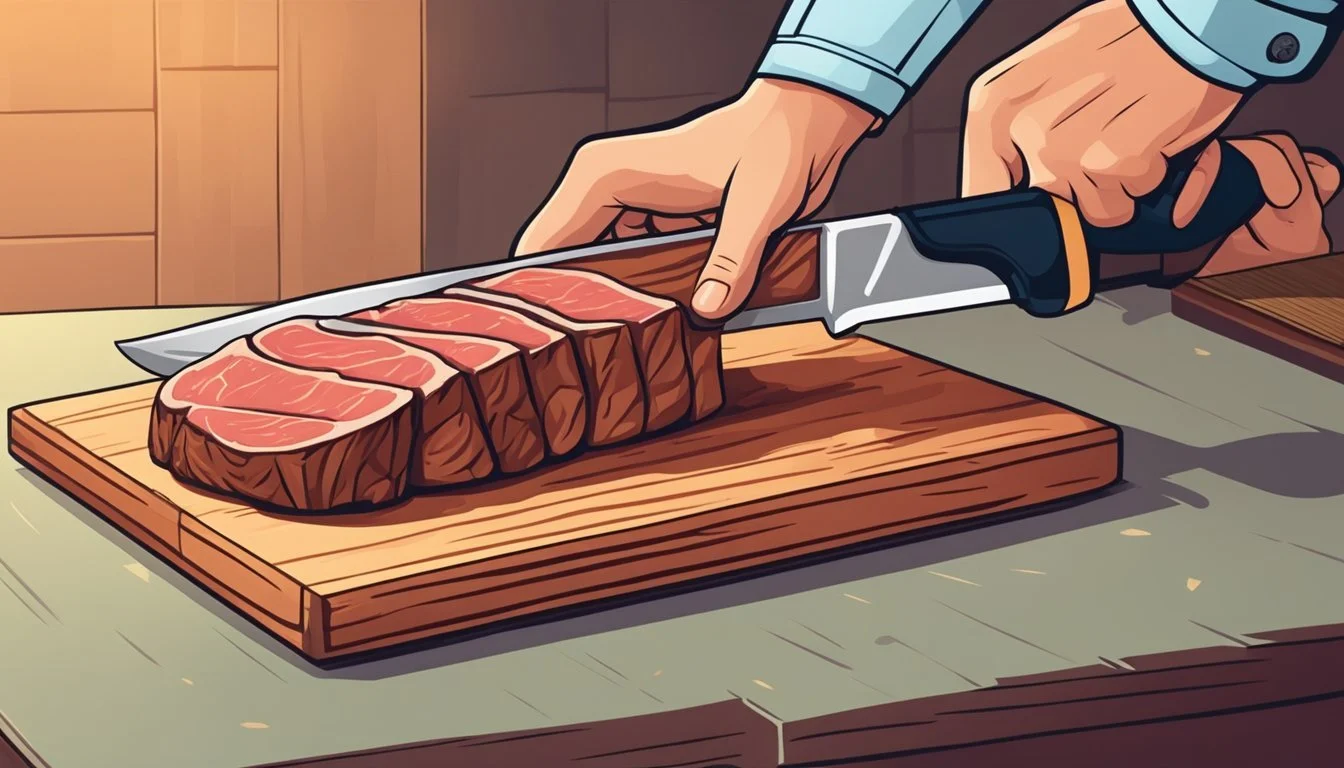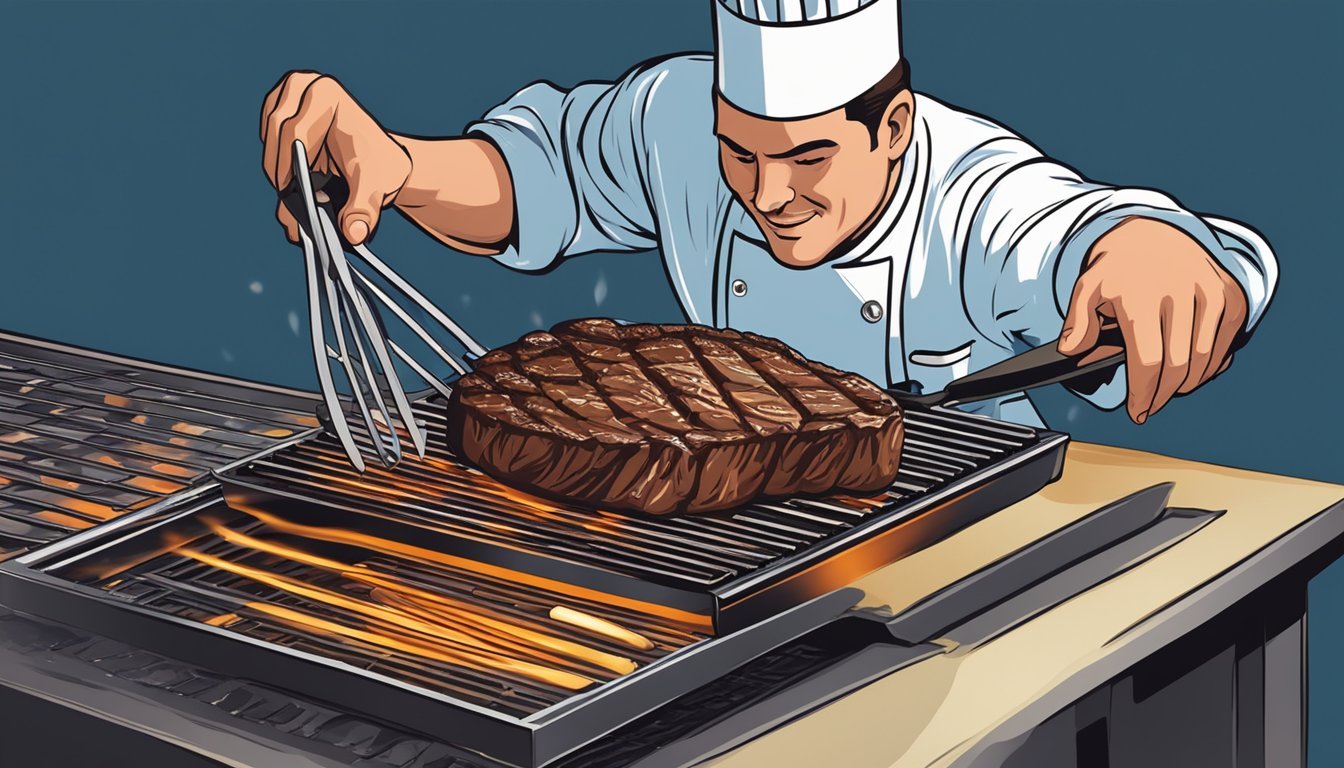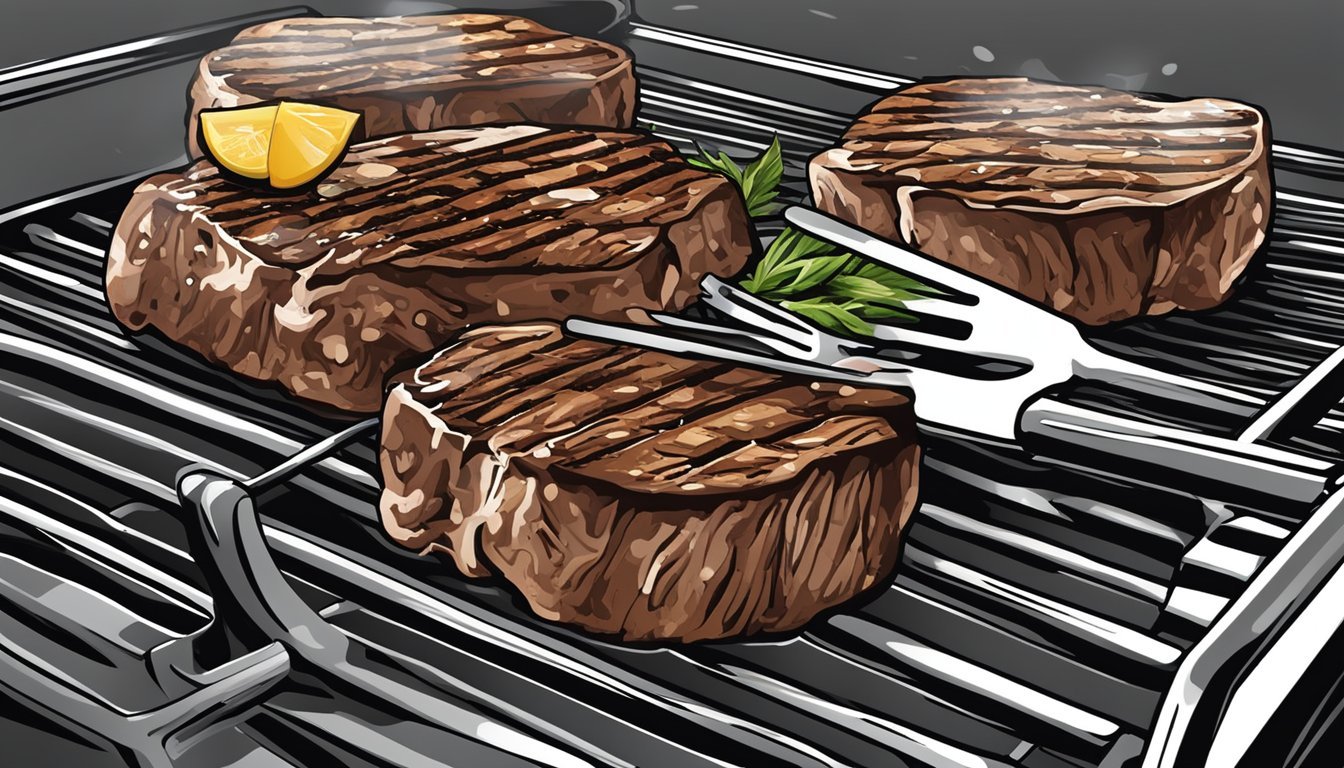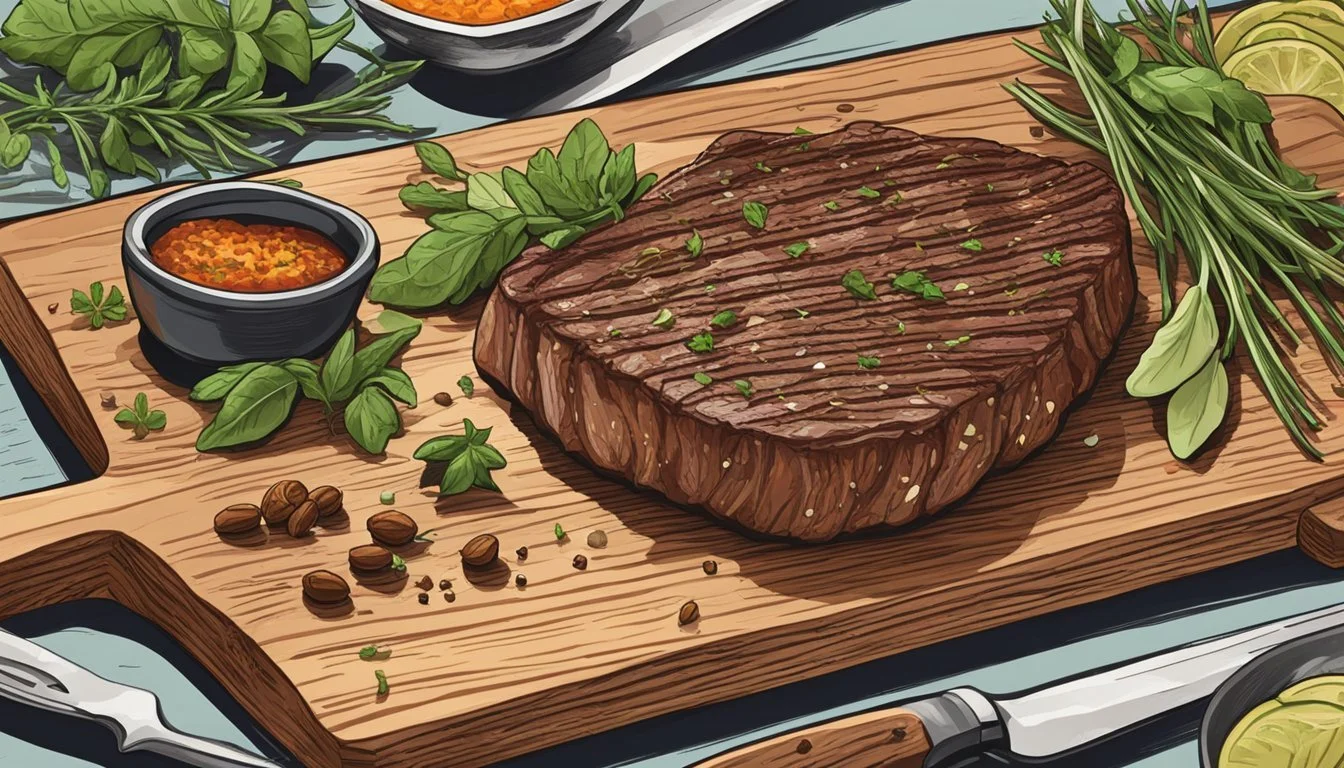How to Cook a Perfect 3/4 Inch Steak
Tips for Juicy, Flavorful Results
Cooking the perfect 3/4 inch steak requires precision and attention to detail. This thickness strikes an ideal balance, allowing for a crispy exterior while maintaining a juicy interior. For a medium-rare 3/4 inch steak, cook it for approximately 3-4 minutes per side on high heat.
The key to achieving steakhouse-quality results lies in proper preparation and technique. Bringing the steak to room temperature before cooking ensures even heat distribution. A well-seasoned cast iron skillet or heavy-bottomed pan can create that coveted crust that seals in the flavors.
Temperature control plays a crucial role in cooking a 3/4 inch steak. Using a meat thermometer helps gauge doneness accurately. For medium-rare, aim for an internal temperature of 135°F (57°C). Remember that the steak will continue to cook slightly after removal from heat, so factor in a few degrees of carry-over cooking.
Choosing the Right Cut
Selecting the perfect steak is crucial for achieving an exceptional dining experience. The cut and quality of the meat directly impact flavor, tenderness, and overall satisfaction.
Understanding Steak Grades
Prime grade beef offers superior marbling and tenderness. It's the top tier, representing only 2-3% of all beef produced. Choice grade is widely available and provides good quality at a more affordable price point. Select grade has less marbling but can still be flavorful when prepared correctly.
Ribeye steaks are prized for their rich flavor and generous marbling. New York strip offers a balance of tenderness and beefy taste. T-bone and porterhouse combine strip and tenderloin in one cut. Filet mignon, cut from the tenderloin, is extremely tender but less flavorful.
Selecting Thickness for Optimal Cooking
A 3/4 inch thickness is ideal for quick cooking methods. It allows for a nice sear while maintaining a juicy interior. Thicker cuts like 1-1.5 inches are better suited for reverse searing or longer cooking times.
Bone-in cuts like T-bone retain more moisture during cooking. They can be trickier to cook evenly but offer enhanced flavor. Boneless cuts like strip steak or filet mignon cook more uniformly and are easier to portion.
Choose cuts with consistent thickness to ensure even cooking. Look for bright red color and avoid cuts with excessive fat on the exterior.
Preparation for Cooking
Proper preparation is key to achieving a perfectly cooked 3/4 inch steak. Two crucial steps involve seasoning and temperature management before cooking.
Marinating and Seasoning
For optimal flavor, season steaks generously with kosher salt and freshly ground black pepper. Apply the seasoning 30 minutes to 1 hour before cooking to allow it to penetrate the meat.
Garlic powder or minced fresh garlic can enhance the steak's taste. Some cooks prefer a simple salt and pepper blend, while others use custom seasoning mixes.
For added flavor, consider marinating the steak. A basic marinade might include olive oil, garlic, herbs, and acid like lemon juice or vinegar. Marinate for 30 minutes to 2 hours, but avoid overmarinating as it can make the meat mushy.
Bringing Steak to Room Temperature
Remove fully thawed steaks from the refrigerator 30-60 minutes before cooking. This allows the meat to reach room temperature, ensuring more even cooking.
Room temperature steaks cook more consistently, reducing the risk of an overcooked exterior and undercooked interior. This step is especially important for thicker cuts.
Pat the steaks dry with paper towels before cooking. Removing excess moisture helps achieve a better sear and crust formation.
During this resting period, the steak can absorb the seasonings more effectively. It's also an ideal time to preheat your cooking surface, whether it's a grill, skillet, or oven.
Cooking Methods Explained
Different techniques can be used to cook a 3/4 inch steak to perfection. Each method offers unique advantages in terms of flavor, texture, and ease of preparation.
Grilling on Gas and Charcoal Grills
Grilling imparts a distinct smoky flavor to steaks. For gas grills, preheat to medium-high heat. Oil the grill grates to prevent sticking. Place the steak on the hot grates and cook for 4-5 minutes per side for medium-rare.
Charcoal grills require a two-zone fire. Create a hot zone for searing and a cooler zone for finishing. Sear the steak for 2-3 minutes per side over high heat, then move to the cooler side to finish cooking.
For both methods, use tongs to flip the steak. Avoid piercing the meat with a fork, which can cause juices to escape. Let the steak rest for 5 minutes before serving to allow juices to redistribute.
Pan-Searing on the Stovetop
Pan-searing creates a flavorful crust while retaining moisture. Heat a heavy-bottomed skillet or cast-iron pan over medium-high heat. Add a small amount of oil with a high smoke point, such as vegetable or grapeseed oil.
Once the pan is hot, add the seasoned steak. Cook for 3-4 minutes on each side for medium-rare. For added flavor, add butter, garlic, and herbs to the pan during the last minute of cooking.
Baste the steak with the melted butter mixture. This technique, called arroser, enhances flavor and promotes even cooking. Remove the steak from the pan and let it rest before serving.
Oven Finishing Techniques
Oven finishing combines stovetop searing with gentle oven heat for even cooking. Preheat the oven to 400°F (200°C). Start by searing the steak in an oven-safe skillet on the stovetop for 2-3 minutes per side.
Transfer the skillet with the steak to the preheated oven. Cook for an additional 5-7 minutes for medium-rare. Use a meat thermometer to check for doneness: 130-135°F (54-57°C) for medium-rare.
For thicker steaks, the reverse sear method works well. Start by cooking the steak in a low oven (250°F/120°C) until it reaches 115°F (46°C) internally. Then sear it in a hot skillet to develop a crust.
Monitoring the Cooking Process
Keeping a close eye on your 3/4 inch steak as it cooks is crucial for achieving the perfect doneness. Accurate temperature measurement and visual cues are key to mastering the art of steak preparation.
Using a Meat Thermometer
A reliable meat thermometer is essential for precise steak cooking. Insert the thermometer into the thickest part of the steak, avoiding fat or bone. For medium-rare, aim for an internal temperature of 130-135°F (54-57°C).
Digital instant-read thermometers offer quick and accurate readings. They can be inserted multiple times without losing significant heat from the steak.
For a 3/4 inch steak, check the temperature about 2-3 minutes before the estimated cooking time ends. This allows for carryover cooking during resting.
Assessing Doneness with the Finger Test
The finger test provides a quick way to gauge steak doneness without cutting into the meat. To perform this test, press the center of the steak with a clean finger or tong.
For medium-rare, the steak should feel like the base of your thumb when touching your middle finger to your thumb. It will have some give but still feel firm.
This method requires practice to master. It's best used in combination with a meat thermometer for accuracy. Remember that different cuts and thicknesses may feel slightly different.
The finger test is particularly useful when grilling, as it allows for quick checks without opening the grill lid and losing heat.
Achieving Desired Doneness
Mastering steak doneness is crucial for a perfect dining experience. The right level of doneness ensures optimal flavor and texture based on personal preferences.
Understanding Steak Doneness Levels
Steak doneness ranges from rare to well done. Rare steak has a cool red center and reaches an internal temperature of 125°F. Medium rare, often considered ideal, has a warm red center at 130-135°F. Medium steak shows a pink center at 140-145°F. Well-done steak has little to no pink and reaches 160°F or higher.
Different doneness levels affect texture and juiciness. Rare and medium-rare steaks are tender and juicy. Medium retains some moisture while offering a firmer texture. Well-done steaks are fully cooked through but may be less tender.
Adjusting Cooking Times for Doneness
Cooking times vary based on desired doneness and steak thickness. For a 3/4-inch steak, aim for 3-4 minutes per side for medium-rare. Increase to 4-5 minutes per side for medium. Well-done steaks require 5-6 minutes per side.
Use a meat thermometer for accuracy. Insert it into the thickest part of the steak. Remove the steak 5°F below the target temperature, as it continues cooking while resting.
Flipping once is generally sufficient. Let the steak rest for 5 minutes before serving to redistribute juices. This resting period is crucial for all doneness levels.
Enhancing Flavor and Tenderness
Proper resting and finishing techniques are crucial for maximizing the flavor and tenderness of a 3/4 inch steak. These methods allow the meat to reach its full potential in both taste and texture.
The Importance of Resting Steak
After cooking, let the steak rest for 5-10 minutes. This allows juices to redistribute throughout the meat, ensuring a juicy bite with every forkful. Place the steak on a warm plate and loosely tent with foil to retain heat.
During the resting period, the internal temperature will continue to rise slightly. This process, called carryover cooking, can increase the temperature by 5-10°F. Factor this in when aiming for your desired doneness.
Resting also helps the steak maintain its shape when cut. Slicing too soon can cause juices to spill out, resulting in a drier steak.
Adding Finishing Touches with Butters and Sauces
Compound butter elevates steak flavor. Mix softened butter with herbs, garlic, or spices. Place a pat on the hot steak just before serving. The heat will melt the butter, creating a rich sauce.
Popular compound butter additions include:
Minced garlic and parsley
Blue cheese crumbles
Cracked black pepper and lemon zest
For a classic sauce, try a pan reduction. After searing the steak, deglaze the pan with red wine or beef stock. Simmer to reduce, then whisk in a pat of cold butter for a silky finish.
A drizzle of high-quality olive oil or aged balsamic vinegar can also enhance flavor. Apply sparingly to complement, not overpower, the meat's natural taste.
Post-Cooking Tips and Serving Suggestions
After grilling your 3/4 inch steak to perfection, proper handling and accompaniments can elevate the dining experience. Attention to slicing technique and thoughtful pairings enhance both presentation and flavor.
Slicing and Presentation
Allow the steak to rest for 5-10 minutes before slicing. This preserves juiciness and ensures optimal texture. Use a sharp knife to cut against the grain in thin, diagonal slices.
For an appealing presentation, arrange the slices on a warm plate. Garnish with fresh rosemary sprigs for aroma and visual appeal. A pat of compound butter can add richness and flavor.
Consider a light drizzle of high-quality olive oil or a sprinkle of coarse sea salt to enhance the steak's natural flavors. Avoid overwhelming the meat with heavy sauces.
Pairing with Sides and Wines
Choose complementary sides that balance the steak's richness. Roasted vegetables like asparagus or Brussels sprouts offer texture and nutrition. Garlic mashed potatoes or a crisp salad provide contrasting flavors.
For wine pairings, bold reds complement the steak's flavor profile. Cabernet Sauvignon, Malbec, or Syrah are excellent choices. Their tannins cut through the meat's fat, enhancing the overall taste experience.
White wine enthusiasts might opt for a full-bodied Chardonnay. Its buttery notes can complement a well-seasoned steak without overpowering it.
Consider the seasoning used on the steak when selecting sides and wines. Garlic and black pepper call for robust pairings, while simpler preparations allow for more delicate accompaniments.
Convenient Cooking Resources
Modern technology offers valuable tools for perfecting your 3/4 inch steak. Digital aids and services can enhance the cooking process and expand your culinary repertoire.
Utilizing Cooking Apps and Timers
Cooking apps provide precise timing for achieving the desired doneness of a 3/4 inch steak. The Omaha Steaks app offers a built-in cooking timer tailored to steak thickness and preferred internal temperature.
Many apps include temperature guides and cooking charts specific to steak thickness. These resources help ensure consistent results every time.
Digital kitchen timers with multiple alarms allow for accurate tracking of cooking stages. This is particularly useful when preparing sides alongside the steak.
Exploring Recipes and Delivery Services
Recipe finders within cooking apps offer diverse preparation methods for 3/4 inch steaks. Users can filter recipes based on cooking equipment, flavor profiles, and dietary preferences.
Steak delivery services like Omaha Steaks provide convenient access to high-quality cuts. Their SteakLover Rewards program offers perks for frequent customers.
Many services include a store locator feature for finding nearby retail locations. This is helpful when last-minute steak cravings strike.
Gift solutions from these services allow for sending gourmet steak packages to friends and family. It's an appealing option for special occasions or thank-you gestures.






